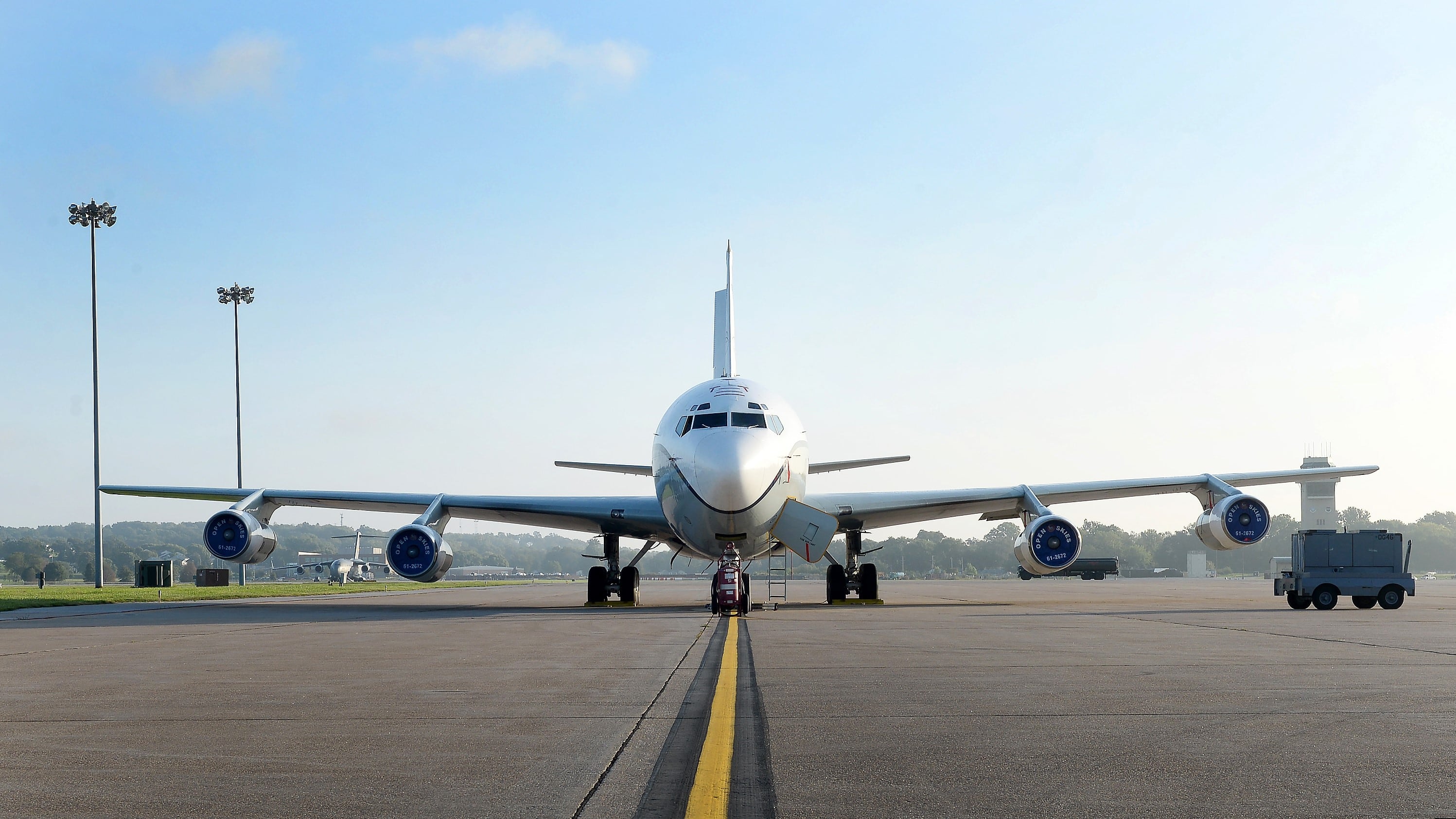WASHINGTON — The U.S. Air Force on July 14 officially rescinded its solicitation to overhaul the OC-135 Open Skies aircraft, cancelling the program two months after President Donald Trump announced the United States’ withdrawal from the Open Skies treaty.
“On 22 May 2020, the United States provided formal notice of its intent to withdraw from the Treaty on Open Skies. As a result, this announcement is hereby cancelled,” the Air Force wrote in a statement on beta.sam.gov.
The Open Skies Treaty permits its 34 signatory nations to conduct unarmed reconnaissance flights over the territory of other member-states for the purposes of monitoring military activity and controlling nuclear arms. The U.S. has relied upon two Boeing OC-135B aircraft flown by the 45th Reconnaissance Squadron out of Offutt Air Force Base, Neb., to carry out Open Skies missions since 1993.
As the aging OC-135s become increasingly difficult to maintain, the Air Force had planned to modify two modern business jets with a digital sensor, processing and control suite that would replace the wet-film cameras currently in use.
But although the service received $125 million from Congress in fiscal year 2019 for the first replacement aircraft and continued to survey industry about recapitalization options, it never moved past the request for information stage, with the final solicitation posed in December 2019.
In March, Defense Secretary Mark Esper told the Senate Armed Services Committee that recapitalization efforts were stalled as the Pentagon waited for instructions from the White House on how to proceed.
“At this point and time, until we make a final decision on the path forward, I’m not prepared to recapitalize aircraft,” Esper said. “We’re holding until we get better direction.”
Although the OC-135B replacement program may be canceled for now, the United States’ withdrawal from the Open Skies treaty is by no means a done deal. Secretary of State Mike Pompeo said in a statement on May 21, that the US would “reconsider our withdrawal should Russia return to full compliance with the Treaty.”
The United States also has a six-month window before a formal exit occurs in November — after the presidential election. Democratic presidential nominee Joe Biden has voiced support for remaining in the treaty, and if elected, could reverse plans to pull out.
Aaron Mehta and Joe Gould in Washington contributed to this report.
Valerie Insinna is Defense News' air warfare reporter. She previously worked the Navy/congressional beats for Defense Daily, which followed almost three years as a staff writer for National Defense Magazine. Prior to that, she worked as an editorial assistant for the Tokyo Shimbun’s Washington bureau.




